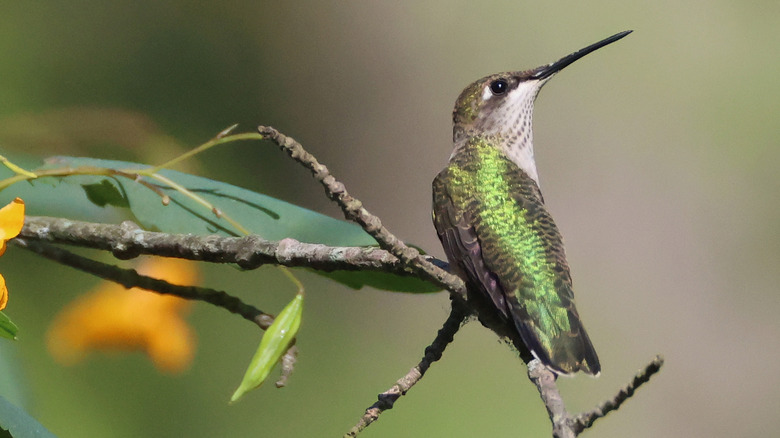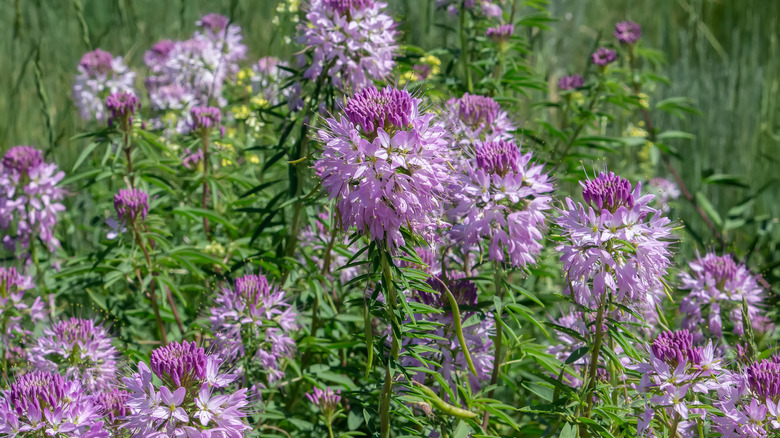The Low-Maintenance, Fast-Growing Flower That Attracts Hummingbirds Like Magic
Busy gardeners love the words "low-maintenance". We all want our flower beds to burst with color and attract pollinators aplenty and giving plants regular drinks from the hose is yet another obligation to shoehorn into our packed summer calendar. This season, get to know the Rocky Mountain bee plant (Cleome serrulata), a nectar-filled flower that's a magnet for hummingbirds and doesn't need much water. Not surprisingly, it's native to the arid Rocky Mountain region, ranging along southern British Columbia down to Arizona and New Mexico, but can be found throughout the U.S.
Equally unsurprising, this flower is beloved by bees. Along with our insect pollinator friends, hummingbirds consider the Rocky Mountain bee plant a delicacy. With the Rocky Mountain bee plant on your flower roster, it's nearly guaranteed to bring more pollinators to your yard and garden, including plenty of ruby-throats, Rufouses, broad-tails, and more. Plant some this season to lure them to your yard along with plenty of other hungry wildlife.
Its spray of tiny blossoms form a loose sphere of pink, lavender, magenta, or orchid purple at the tips of stems as tall as 5 feet. As lovely as they sound, their aroma isn't a selling point for humans. In fact, it's earned a few other non-endearing nicknames like "stinkweed" and "stinking clover". Its distinctive funk keeps most livestock and large wildlife away, but it can bring the charm of hummingbirds to your garden.
How and where to grow Rocky Mountain bee plant
True to many arid-zone plants, the Rocky Mountain bee plant loves a sunny spot with well-draining soil. It will make do with sandy or loamy soil in a wide range of pH levels. This delicate-looking, yet tough, flower is hardy in zones 3 to 8, and it will thrive in areas with moderate to low moisture. If you can check the "yes" box for those criteria, the Rocky Mountain bee plant is a good fit for your garden.
This plant benefits from a month of seed stratification, so make sure to order your seeds well before planting season. Help the seeds come out of dormancy by placing them in a sealed plastic bag filled with damp sterile growing medium, and place the bag in the fridge for 30 days. Check on the seeds regularly, and plant any that sprout early. Plant seeds ¼ to ½ inch deep in the soil, and press the soil over them to compact it lightly. As they prefer low amounts of water, water them often enough to keep the soil moist until the seedlings mature, and then let them get a little dry between each watering.
Space seedlings to about one plant to every 1.5 square feet of earth. Each plant can spread up to 2 feet wide, so you will want to thin closely growing seedlings. Once planted, the seeds have a very high germination rate. The Rocky Mountain bee plant is an annual, but it does self-seed for upcoming seasons. Depending on your area, this plant can bloom anywhere from May until September. You, and the local hummingbirds, will be sure to enjoy it.

